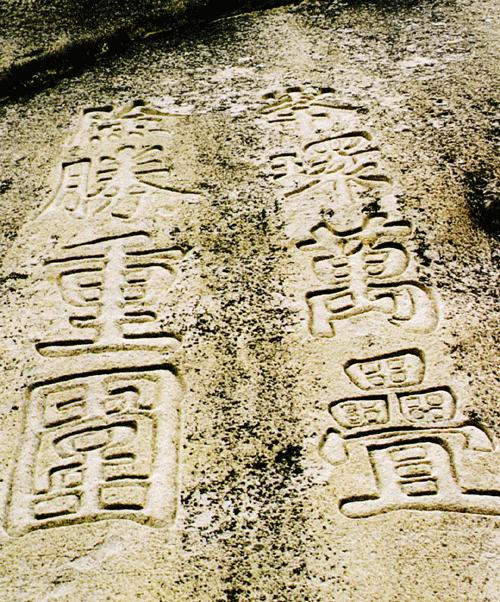"Stone carving" refers to the inscription, pattern of the stele and other stone products or cliff stone wall, after mentioning the "stone carving", I believe many readers will think of the "He Junge Dao Stele", which is the earliest Eastern Han Moya stone carving found in Sichuan so far, but experts see the "He Junge Dao Stele" but said: "If it were not for the ancients to take this method of protection, it would have been destroyed long ago." "What kind of carving methods did the ancients use to keep it intact?"

In museums around the world, we often see "stone stele", these stone stele collected by the museum is very lucky, they are preserved relatively intact, posterity through the inscription on the stone stele, you can further understand the history of each dynasty and generation. In contrast, the fate of some stone tablets is very "tragic", they were destroyed for various reasons, such as the "Dacheng Most Holy Ancestor Wen Xuanwang" stone stele, the "GudingJun Mountain" stele, and the "Wait ci temple" stele.
As we all know, cultural relics are non-renewable resources, and after the stone stele is destroyed, not only the stone stele itself disappears, but the precious historical culture also disappears.
According to historical records, there is a legendary inscription on the mainland, which is the "He Junge Dao Stele". This inscription is a record of the Eastern Han Dynasty Jianwu in the second year of the first century, Shu County Taishou He Jun ordered people to build the ancient boardwalk to complete the JiGong stele, the time of erection of the monument is 57 AD, but what everyone did not expect is that this stele with extremely high research value disappeared in the long river of time, no one knows where it is, and even some scholars believe that it has been destroyed.
Was the Ho JunGe Dao Stele really destroyed? In fact, it is hidden in a special place, waiting for posterity to discover.
The inscription read out by this teacher only appears in historical materials, and it is the content of the "He Junge Dao Stele", that is to say, the character stele he accidentally found is the "He Junge Dao Stele" that has disappeared for a thousand years.
Immediately afterward, the two immediately reported the news to the local Cultural Relics Research Institute, and the staff answered the news and immediately rushed to the scene to conduct a preliminary examination of this stele, and finally determined that it was the original he Junge Dao stele.
In real life, after a stone stele has experienced wind and rain for a long time, it will be damaged to varying degrees, and the text on it will become unclear, but the "He Junge Dao Stele" has not been protected, why can it be preserved intact?
First of all: The "Ho JunGe Road Monument" is located about 10 meters below the base of National Highway 108, and neither humans nor animals can destroy it. Then: The rocks above it protrude outwards like a roof, shielding the He Junge Dao Monument from the wind and rain. Finally, when the contemporary workers were cultivating, the rocks under the excavation rolled down and were piled directly to 1.5 meters away from the inscription, and there were still many reeds and thorns in the gaps in the stones, which concealed the "He Junge Dao Monument" very well, so that posterity could find it entirely because of luck.
When the staff saw the natural protection measures of the "He Junge Dao Monument", they could only sigh at the magic of nature and protect important cultural relics in the dark.
"He Junge Dao Stele" is 7 to 9 characters per line, the handwriting is relatively neat, and the calligraphy style is in line with the early style of the Han Dynasty, giving people a sense of freedom and generosity, which provides an important basis for future generations to study the evolution process of seals and subordinates.
If you are very interested in the "He Junge Dao Monument", you can go to the location where you found it, feel its unique charm up close, and hope that this precious cultural relic can be well preserved and leave a valuable cultural heritage for future generations.